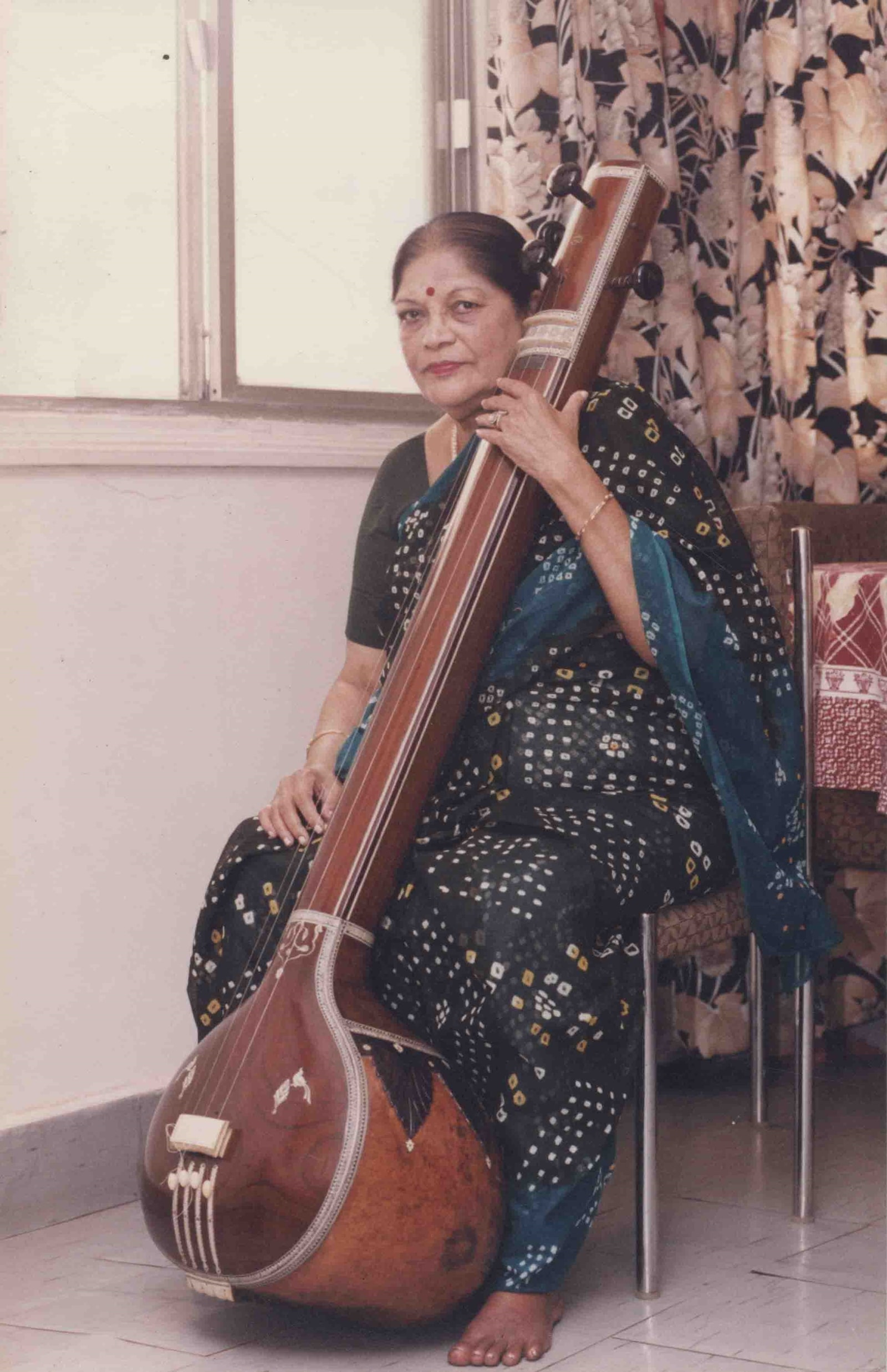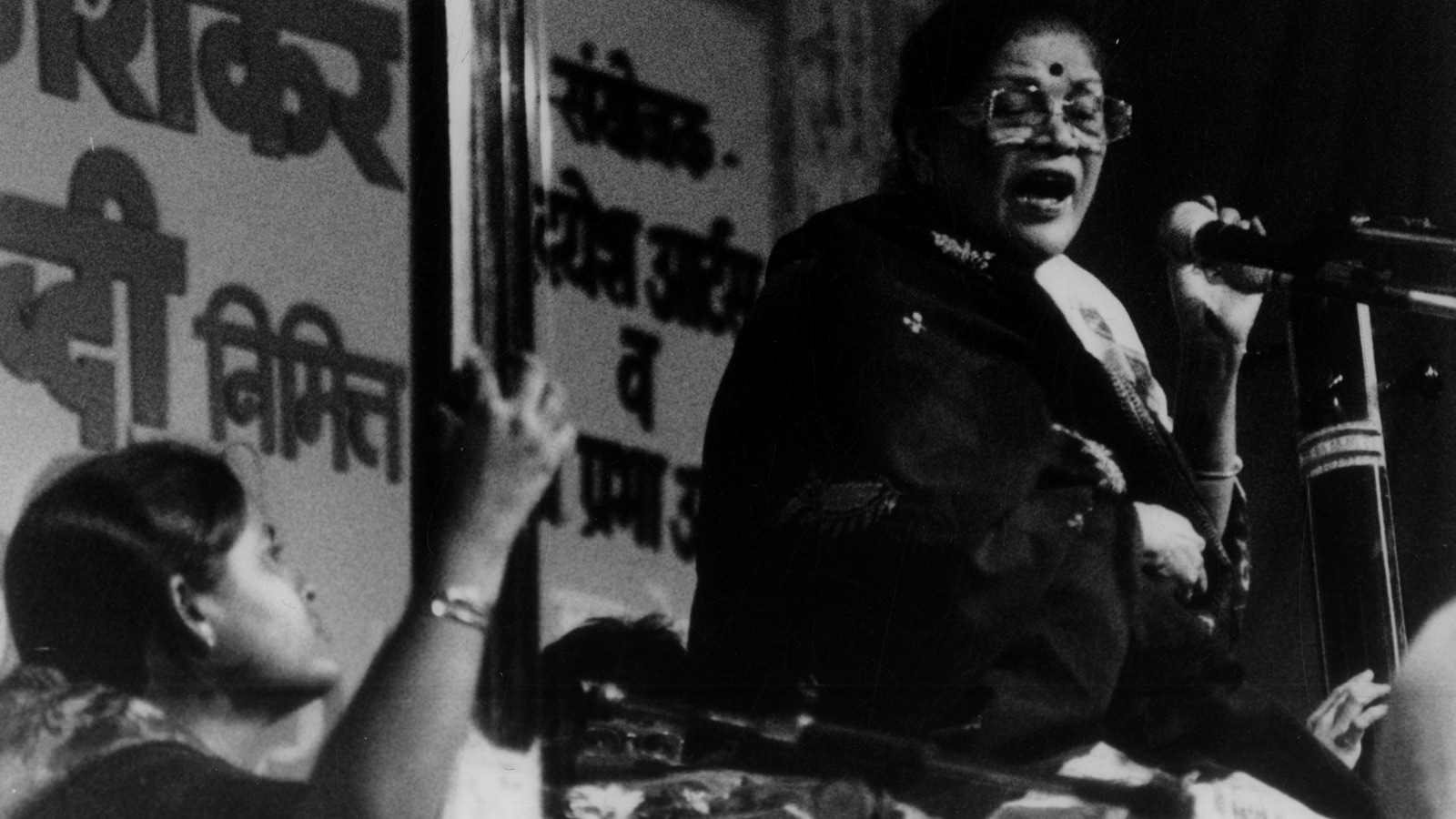The provenance of the popular dadra ‘Rangi saari gulaabi chunariya’, with its distinct Purabiya lilt, can easily be traced back to the oeuvre of thumri exponent Shobha Gurtu. Pliant and expressive, Gurtu’s earthy, slightly reticent rendition continues to be a benchmark not only for those who perform the piece today but also as a tutorial to understand the genre: The love song that moves with a certain lyricism.
Although Gurtu became synonymous with this age-old dadra, elevating it to the concert stage followed by recordings that made it immensely popular, she never claimed it as her own, always calling it “paramparik (traditional)”. Like a lot of thumris, this one too may well have been created by women singers from 19th-century Awadh as a hori with shringaar-ras as its dominant feature and Radha-Krishna as protagonists.
Story continues below this ad
Many classical vocalists, barring a handful who credit their version to Gurtu during concerts because they draw from her style, usually do not acknowledge the artiste. This common courtesy, an essential part of protocol of classical music, is now a convenient blind spot.
When playback singer Kavita Seth sang the reel-friendly version of the piece, merging it with some synth-heavy trance build-up for Dharma Productions’ Jug Jug Jiyo (2022), the composition credit was taken by her as well as her son and composer Kanishk Seth. The lyrics were called ‘traditional’. Interestingly, the composition was also called “traditional” when the song was first brought out independently by the duo. The Seths are no more than music producers here. The song’s streaming on Spotify has crossed 140 million. Gurtu’s version has only been streamed about a lakh times.
Gurtu, fondly called Shobhatai in Mumbai where she lived, would have turned 100 last week. Were she alive, Gurtu perhaps wouldn’t have even raised an eyebrow at others building on her work. Child-like, she would have even been content with the idea of the younger generation finding and cherishing an old dadra. For a song that belonged to her more than anyone else in the last century, she would have taken it in her stride. To ease the conversation, she probably would’ve followed it up with a detailed talk about Konkani fish curry, one of her favourites.
Story continues below this ad
Gurtu was one of the leading exponents of thumri and the successor of Begum Akhtar and Siddheshwari Devi, even though she never learned from them. She was a force to reckon with in terms of Purab ang gayaki despite having no connection to UP (Konkani was her mother tongue and Marathi her second language ) and had a full-throated voice that echoed her illustrious predecessors. Therefore, it feels tragic how she’s been forgotten in mass memory; even though she was adored by connoisseurs and her friends and contemporaries like Kishori Amonkar and Girija Devi, accompanying artistes Purushottam Walawalkar (harmonium), Nana Muley and Aneesh Pradhan (tabla).
Besides fish curry, Gurtu was also fond of talking about her formative years. Born in Belgaum as Bhanumati Shirodkar, Gurtu grew up in Kolhapur where she was initiated into music by her famous Goan mother – dancer and vocalist Menakabai Shirodkar, who trained under the famous Ustad Bhurji Khan, the youngest son of Ustad Alladiya Khan, founder of the Jaipur-Atrauli gharana. A curious child, she keenly observed and then learned what her mother was being taught. Gurtu trained under Alladiya Khan’s nephew Nathan Khan. However, the style that one saw in her semi-classical music came from Ustad Ghamman Khan, who guided her in the romantic but complex world of thumri-dadra and other analogous forms. Later, she also trained under her father-in-law Narayannath Gurtu, a sitar player who was an officer in the Belgaum police force.
most read
What Gurtu did with her training is what made her the true torchbearer of thumri after the North star of the form – Akhtar – died. Despite being largely unfamiliar with the language, she tried to understand every syllable and imbued it with the expression that she felt was right for the words. Her spirit of inquiry led her to ghazals too, leading her to record an album with Mehdi Hassan. Titled Tarz (1993), it was composed by Naushad who called her voice “raseeli”. The album remains relatively unknown. Gurtu’s Urdu diction, like her Awadhi and Braj bhasha thumris, is spot on. When her son, percussionist and world music pioneer Trilok asked her to be a part of his world in Germany, where he was embracing jazz and classical music, she heartily agreed. Shobharock, his debut album’s lead single with Gurtu singing a Maalkauns bandish along with violins, synths, heavy drums, bongos, a horn section and electric guitars remains memorable. She sang in Kamal Amrohi’s Pakeezah and had actor Nana Patekar seek her out for a version of Yaad piya ki aaye — Bade Ghulam Ali’s famed thumri a courtesan’s song that’s the leitmotif in his directorial debut — Pahaar (1991).

Gurtu was already in her 50s by the time she found any attention from recording companies. She was awarded the Padma Bhushan in 2004, two years before she passed away. She was 77 and had just gone through a difficult hip surgery which made walking difficult. When she only had the Sangeet Natak Akademi and someone spoke of a Padma, she would say that she would have been happier still if Dhondutai Kulkarni, the last well-known exponent of Jaipur-Atrauli gharana (and not as well known until Namita Devidayal’s The Music Room spoke about her story), too, had been honoured.
To me, one of the things that is more telling of Gurtu’s spunky personality than her music is a photograph of her sneaking up from behind and playfully covering Kishori Amonkar’s eyes in a game of “guess who”. Unfazed by Amonkar’s mercurial temperament, her audacity is of particular interest. And then the same Gurtu would dive into ‘Sayiyaan nikas gaye’, the heartfelt lament in raag Bhairavi and become the jogan, who’d lost the world. Dipped in yearning, the pukaar continues to resonate in one’s heart. Just like Gurtu’s playful thumris with an ada of their own.
suanshu.khurana@expressindia.com


